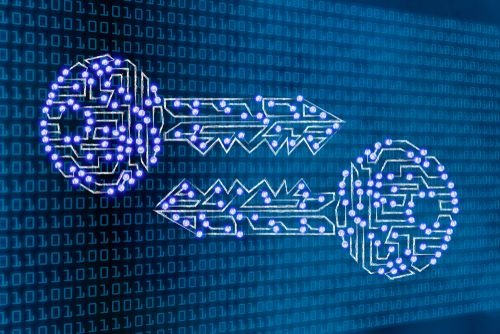
In today’s hyper-connected world, data is the new oil—a valuable resource that powers everything from personalized advertising to predictive analytics. However, with this growing reliance on data comes an increased risk of data breaches. In recent years, we have witnessed several high-profile hacks that have compromised the data of millions of individuals and businesses. These breaches not only pose a severe threat to privacy but also have far-reaching consequences, including financial losses, reputational damage, and legal repercussions. This article explores some of the most significant recent data breaches, analyzes their consequences, and outlines the key lessons that organizations and individuals can learn to better protect themselves in an increasingly digital world.
Understanding Data Breaches
A data breach is an incident in which sensitive, confidential, or protected information is accessed, disclosed, or stolen by unauthorized individuals. This information can range from personal data, such as names, addresses, and social security numbers, to corporate data, like trade secrets, intellectual property, and financial records.
Data breaches can occur due to various reasons, including cyberattacks (such as hacking, phishing, or malware), insider threats, negligence, or human error. The methods employed by cybercriminals are constantly evolving, becoming more sophisticated and harder to detect. Regardless of the cause, the impact of a data breach can be devastating, affecting individuals, businesses, and even governments.
Recent High-Profile Data Breaches
Several significant data breaches in recent years have highlighted the growing threat landscape and the potential consequences of inadequate data protection measures. Here are some of the most notable cases:
- Facebook (Meta) Data Breach (2021)
In April 2021, personal data of over 530 million Facebook users was found online on a hacking forum. The leaked data included names, phone numbers, email addresses, and other sensitive information. While the breach itself had occurred in 2019 due to a vulnerability in Facebook’s contact importer tool, the exposure of this data in 2021 reignited concerns over Facebook’s data protection practices.
Consequences:
- Reputational Damage: Facebook faced significant backlash from the public and privacy advocates for failing to adequately protect user data and for its delayed response in notifying users about the breach.
- Regulatory Scrutiny: The incident prompted renewed scrutiny from regulators worldwide, particularly in Europe, where GDPR violations could lead to substantial fines.
- Increased Awareness: The breach highlighted the importance of strong privacy settings and better data management practices for users.
- Colonial Pipeline Ransomware Attack (2021)
In May 2021, Colonial Pipeline, a major fuel pipeline operator in the United States, fell victim to a ransomware attack by a cybercriminal group called DarkSide. The attack forced the company to shut down its operations for several days, causing widespread fuel shortages across the eastern United States.
Consequences:
- Economic Impact: The shutdown led to panic buying and significant disruptions in fuel supply, affecting millions of consumers and businesses.
- Ransom Payment: Colonial Pipeline paid a ransom of $4.4 million in Bitcoin to the attackers to restore its operations. Although a portion of the ransom was later recovered by the U.S. government, this incident underscored the risks of paying ransoms.
- Government Response: The attack prompted the U.S. government to elevate cybersecurity as a national priority, leading to new executive orders and initiatives to strengthen critical infrastructure defenses.
- T-Mobile Data Breach (2021)
In August 2021, T-Mobile confirmed a data breach that affected over 40 million current and prospective customers. The breach exposed a vast amount of sensitive information, including names, dates of birth, social security numbers, and driver’s license details. Hackers accessed the data through a compromised API.
Consequences:
- Class Action Lawsuits: T-Mobile faced multiple class-action lawsuits from affected customers, alleging negligence and failure to protect their data adequately.
- Financial Losses: The breach is expected to result in substantial financial losses for T-Mobile due to litigation costs, regulatory fines, and the cost of providing credit monitoring services to affected customers.
- Reputational Damage: The breach damaged T-Mobile’s reputation and eroded customer trust, potentially impacting its subscriber base.
- SolarWinds Supply Chain Attack (2020)
The SolarWinds attack, discovered in December 2020, was one of the most sophisticated and far-reaching cyber espionage campaigns in recent history. Hackers, believed to be affiliated with a nation-state, compromised the software supply chain by injecting malware into SolarWinds’ Orion software updates, which were used by thousands of organizations, including government agencies and Fortune 500 companies.
Consequences:
- Widespread Impact: The attack affected over 18,000 organizations, including U.S. federal agencies such as the Department of Homeland Security, the Treasury, and the State Department.
- National Security Concerns: The breach exposed sensitive government data and raised concerns about the vulnerability of critical infrastructure to state-sponsored cyberattacks.
- Policy Changes: The attack prompted the U.S. government to issue new cybersecurity guidelines and recommendations for supply chain security.
- Equifax Data Breach (2017)
One of the most significant data breaches in history, the Equifax breach exposed the personal information of approximately 147 million people in the U.S. The breach was attributed to a failure to patch a known vulnerability in the company’s web application software.
Consequences:
- Financial Penalties: Equifax agreed to a settlement of up to $700 million with the Federal Trade Commission (FTC), the Consumer Financial Protection Bureau (CFPB), and 50 U.S. states and territories.
- Reputational Damage: The breach severely damaged Equifax’s reputation, leading to a loss of consumer trust and a decline in its stock price.
- Increased Regulation: The breach spurred lawmakers to push for stricter data protection regulations and greater accountability for companies that handle sensitive consumer data.
Consequences of Data Breaches
The consequences of data breaches are far-reaching and multifaceted, impacting individuals, businesses, and society at large. Here are some of the key consequences observed in recent high-profile hacks:
- Financial Losses
Data breaches can result in substantial financial losses for organizations. These losses stem from various sources, including direct costs (such as legal fees, regulatory fines, and compensation payments), indirect costs (such as reputational damage and lost business), and long-term costs (such as increased cybersecurity spending). For example, the Equifax breach is estimated to have cost the company over $1.4 billion in expenses related to remediation, legal settlements, and cybersecurity improvements.
- Reputational Damage
A data breach can severely damage an organization’s reputation, eroding customer trust and loyalty. Reputational damage often leads to lost customers, reduced revenue, and difficulty attracting new business. For instance, Facebook faced significant reputational damage following its data breach, which led to increased scrutiny from regulators and diminished user trust in its platform.
- Legal and Regulatory Consequences
Data breaches can trigger legal and regulatory consequences, including lawsuits, fines, and penalties. In many jurisdictions, data protection laws require organizations to notify affected individuals and regulatory authorities promptly following a breach. Failure to comply with these regulations can result in severe penalties. For example, the GDPR (General Data Protection Regulation) in the European Union imposes fines of up to 4% of a company’s global annual turnover for serious violations.
- Operational Disruption
Breaches can disrupt an organization’s operations, as seen in the Colonial Pipeline ransomware attack, which forced the company to shut down its pipeline for several days, causing significant disruptions in fuel supply. Such operational disruptions can have cascading effects, impacting supply chains, customer services, and business continuity.
- Loss of Intellectual Property
For businesses, a data breach can lead to the theft of intellectual property, trade secrets, or proprietary information. This loss can have long-term competitive consequences, especially if stolen data is used by competitors or foreign adversaries to develop similar products or services.
- National Security Threats
State-sponsored cyberattacks, such as the SolarWinds breach, can pose significant national security threats by compromising critical infrastructure, government networks, and sensitive information. Such breaches highlight the need for robust cybersecurity measures at the national level and cooperation among governments to counter cyber threats.
Lessons Learned from Recent Data Breaches
The wave of high-profile data breaches in recent years underscores the need for organizations and individuals to adopt a proactive and comprehensive approach to cybersecurity. Here are some key lessons that can be learned:
- Invest in Robust Cybersecurity Measures
Organizations must invest in robust cybersecurity measures, including advanced threat detection and response systems, encryption, multi-factor authentication, and regular security assessments. Cybersecurity should be a top priority for organizations, with adequate resources allocated to prevent, detect, and respond to threats.
- Implement a Zero Trust Security Model
A Zero Trust security model assumes that no one, whether inside or outside the network, is automatically trusted. This approach requires continuous verification of user identities, monitoring of network activity, and strict access controls to minimize the risk of unauthorized access and data breaches.
- Regularly Patch Vulnerabilities
Many data breaches, such as the Equifax breach, could have been prevented by promptly patching known vulnerabilities. Organizations must establish a rigorous patch management process to ensure that software updates and security patches are applied promptly across all systems and devices.
- Enhance Employee Awareness and Training
Human error remains a significant cause of data breaches. Organizations should invest in regular cybersecurity training and awareness programs for employees to help them recognize phishing attempts, social engineering attacks, and other common tactics used by cybercriminals.
- Develop and Test an Incident Response Plan
Organizations must have a comprehensive incident response plan in place to quickly detect, contain, and mitigate the effects of a data breach. This plan should include clear procedures for communication, investigation, and recovery and should be regularly tested through simulated exercises.
- Adopt Strong Data Governance Practices
Data governance involves the management of data quality, security, and privacy. Organizations should establish clear data governance policies, including data classification, access controls, data retention, and disposal protocols. Proper data governance can help minimize the amount of sensitive data at risk in a breach.
- Collaboration and Information Sharing
Governments, businesses, and cybersecurity professionals must collaborate and share information about threats, vulnerabilities, and best practices to enhance collective cybersecurity resilience. Collaborative initiatives, such as public-private partnerships and threat intelligence sharing, can help organizations stay ahead of evolving cyber threats.
- Prepare for Regulatory Compliance
Organizations must stay informed about relevant data protection laws and regulations, such as GDPR, CCPA (California Consumer Privacy Act), and others, to ensure compliance. Compliance requires not only legal expertise but also the implementation of appropriate technical and organizational measures to protect data.
Conclusion
Data breaches are an unfortunate but inevitable part of today’s digital landscape. As recent high-profile hacks have demonstrated, the consequences of a data breach can be severe and far-reaching, impacting not only the organization directly involved but also individuals, other businesses, and even national security.
However, these breaches also offer valuable lessons in building stronger cybersecurity defenses, enhancing data protection practices, and fostering a culture of security awareness. By learning from these incidents and taking proactive steps to safeguard data, organizations and individuals can better protect themselves in an increasingly interconnected world.
In the end, cybersecurity is not just a technological challenge but a shared responsibility. Everyone—from corporate executives to everyday internet users—has a role to play in building a safer digital environment for all.






